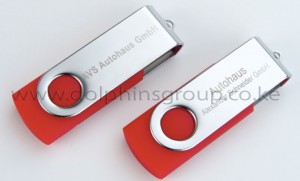The Origin of Branding..
Branding started in Sweden in the middle age (476-1492) when the ruling economy was the agrarian and commodities were extracted from the natural world: animal, mineral, vegetables, etc.
A brand was the action of burning a symbol into the flesh of a Norse in order to signify ownership of the animal. Entomology tells us that the word “brand” is a degenerate of the old Norse word “brandr”.
The Vikings may have spread the word “brandr” in England, where it was eventually incorporated into daily language. Similarly this action was adopted in the late twelfth and early thirteenth centuries, through the practice of abjuration. The practice of abjuration meant rejecting or exiling a criminal from England forever. To communicate the status of the exiled person to the world-at-large and in order to identify them as not trustworthy, abjurers’ thumbs were branded with an “A.”
In trade law, the term trademark is used instead of the word “brand”. Patents and Trademarks were legally recognized for the first time with the establishment of the Venetian Patent law in 1474. The meaning of a brand was later registered in the dictionary in 1552 as “identifying mark made by a hot iron”. It was in between the mid 16th century and the beginning of the 19th that the word “brand” began to be related to trade, emotions and trust. A trademark was a symbol that would differentiate the goods between manufacturers. The oldest brands which exist today were introduced into the market in the 18th century and are from the alcoholic drinks sector. This is due to the fact that these products are non-perishable (because they are alcohol based) and thus needed a distinguishing name/symbol so that they could be marketed over a wider area and during a longer time period. Some examples of the oldest brands include “Twining 1706”, “Schweppes 1798” and “Ballantine’s 1809”.
Even though the first brands had been launched, it was not legally possible to patent something in the U.S. until after the establishment of the Constitution in 1790 and in France with the establishment of the patent law one year later in 1791. In the preindustrial era (1760-1830), agriculture still formed the foremost source of income and employment and most “consumers” produced their own food products. By the end of this era, in 1827, the word brand was broadened and registered in a dictionary as “a particular make of goods”.Branding started in Sweden in the middle age (476-1492) when the ruling economy was the agrarian and commodities were extracted from the natural world: animal, mineral, vegetables, etc.
A brand was the action of burning a symbol into the flesh of a Norse in order to signify ownership of the animal. Entomology tells us that the word “brand” is a degenerate of the old Norse word “brandr”.
The Vikings may have spread the word “brandr” in England, where it was eventually incorporated into daily language. Similarly this action was adopted in the late twelfth and early thirteenth centuries, through the practice of abjuration. The practice of abjuration meant rejecting or exiling a criminal from England forever. To communicate the status of the exiled person to the world-at-large and in order to identify them as not trustworthy, abjurers’ thumbs were branded with an “A.”
In trade law, the term trademark is used instead of the word “brand”. Patents and Trademarks were legally recognized for the first time with the establishment of the Venetian Patent law in 1474. The meaning of a brand was later registered in the dictionary in 1552 as “identifying mark made by a hot iron”. It was in between the mid 16th century and the beginning of the 19th that the word “brand” began to be related to trade, emotions and trust. A trademark was a symbol that would differentiate the goods between manufacturers. The oldest brands which exist today were introduced into the market in the 18th century and are from the alcoholic drinks sector. This is due to the fact that these products are non-perishable (because they are alcohol based) and thus needed a distinguishing name/symbol so that they could be marketed over a wider area and during a longer time period. Some examples of the oldest brands include “Twining 1706”, “Schweppes 1798” and “Ballantine’s 1809”.
Even though the first brands had been launched, it was not legally possible to patent something in the U.S. until after the establishment of the Constitution in 1790 and in France with the establishment of the patent law one year later in 1791. In the preindustrial era (1760-1830), agriculture still formed the foremost source of income and employment and most “consumers” produced their own food products. By the end of this era, in 1827, the word brand was broadened and registered in a dictionary as “a particular make of goods”.
Tags: banners design, branded flash disk, Branded flash disks resellers in Kenya, branded leather folders, Branding, Brochures designers and printers in Nairobi kenya, bulk flash drives branding, Business Cards designers and printers in Nairobi kenya, conference bags manufacturers and makers in nairobi kenya, conference folders manufacturers and makers in nairobi kenya, conference items manufacturers in nairobi kenya, designers and printers in Nairobi kenya, envelops branding designers and printers in Nairobi kenya, Flash disk branding in nairobi kenya, fliers design and printing, Flyers designers in Nairobi kenya, folders manufacturers, gigt items makers and manufacturers in nairobi kenya, graphic design and printing, Kenya leading branding company, marketing tools, Newspapers Adds designers and printers in Nairobi kenya, polo shirts branding in nairobi kenya, Posters designers and printers in Nairobi kenya, Professional Logos designers and printers in Nairobi kenya, promotional items reseller and distributors in kenya. T-shirt branding and manufacturing, quality designs and prints, Roll up banners makers and manufactures in nairobi, t shipt makers and manufactures in nairobi kenya, wholesale flash drives, wholesale flash drives resellers in kenya, wholesales flash disk resellers in nairobi
Blogroll
-
Recent Posts
Recent Comments
Archives
Categories
Meta

